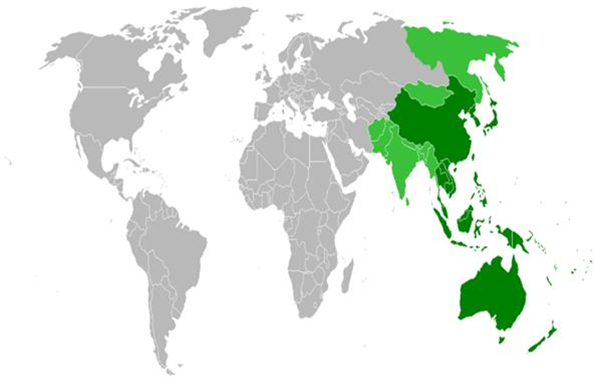Summary Overview
Glycol Ethers Market Overview:
The global glycol ethers market is steadily expanding, fuelled by increased demand in key industries such as automotive, construction, electronics, and pharmaceuticals. This market covers a wide range of glycol ether products, such as solvents, cleaning agents, and industrial fluids. Our paper examines procurement trends in depth, with an emphasis on cost optimization tactics and the use of modern digital solutions to improve procurement and operational procedures.
Looking ahead, the glycol ethers market confronts several significant procurement problems, including managing fluctuating raw material costs, assuring product quality, complying with environmental requirements, and maintaining effective supply chain management. The use of digital technologies for supply chain visibility and strategic sourcing is critical for streamlining procurement procedures and achieving long-term competitive advantages.
Market Size: The global Glycol Ethers market is projected to reach USD 9.50 billion by 2035, growing at a CAGR of approximately 3.41% from 2025 to 2035.
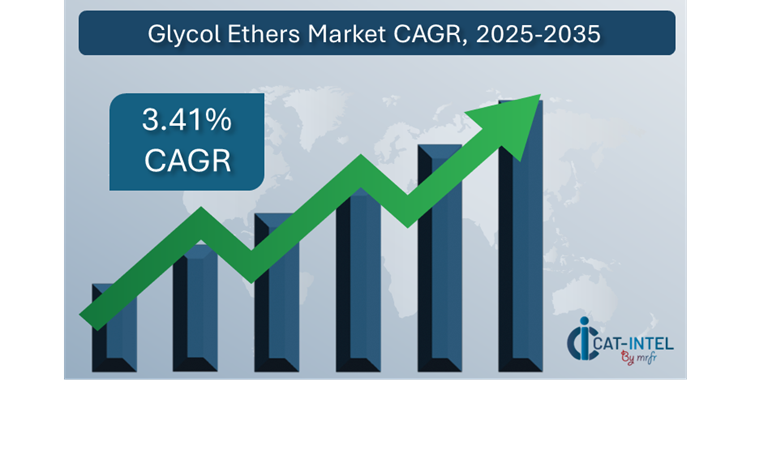
Growth Rate: 3.41%
Manufacturing and supply chain optimization: Companies are using glycol ethers to increase production efficiency and optimize logistics, resulting in smoother and faster operations.
Retail and E-Commerce Growth: The expansion of the retail and e-commerce sectors increases demand for glycol ethers, particularly for cleaning, solvent-based solutions, and coatings.
Technological Transformation: Advancements in AI, machine learning, and automation are transforming the glycol ethers business.
Innovations: Modular glycol ether solutions are becoming more common, allowing organizations to choose and integrate only the goods they require.
Investment Initiatives: Businesses are rapidly investing in cloud-based solutions and digital platforms to save infrastructure costs and improve worldwide accessibility.
Regional Insights: Asia Pacific and North America continue to dominate the glycol ethers market. These regions These regions benefit from strong digital infrastructure, rising industrial demand, and quick adoption of cloud-based solutions, which drive market growth.
Key Trends and Sustainability Outlook:
Cloud Integration: Manufacturers and suppliers are increasingly using cloud-based glycol ether production and logistics platforms, which offer scalability, cost effectiveness, and increased data access.
Advanced Features: The use of developing technologies such as AI, IoT, and blockchain improves decision-making, increases manufacturing efficiency, and promotes transparency in the glycol ethers supply chain.
Scalability Needs: Companies are increasingly focusing on sustainability, employing glycol ethers to assist satisfy environmental regulations and enhance resource management.
Customization Trends: There is an increasing need for glycol ether goods designed for specific industries such as automotive, medicines, and construction
Data-Driven Insights: The growing usage of data analytics in the glycol ethers market allows businesses to better estimate demand, optimize inventory levels, and track performance indicators to improve operational efficiency.
Growth Drivers:
Digital Transformation: The growing digital transformation of industries such as automotive, manufacturing, and electronics is increasing the demand for high-performance glycol ethers to enable current production processes.
Demand for Process Automation: As businesses seek to automate production and decrease operational bottlenecks, the use of glycol ethers in solvent-based solutions and cleaning agents is increasing.
Scalability requirements: Businesses are looking for glycol ether solutions that can scale with their operations, providing the flexibility to interact with current systems and handle changing production demands.
Regulatory Compliance: As environmental restrictions tighten, glycol ethers serve an important role in assisting businesses in meeting health, safety, and sustainability standards, as well as guaranteeing product quality and regulatory compliance.
Globalization: The growing worldwide trade industry is driving demand for glycol ether solutions that support multi-regional production, adhere to international rules, and suit the different needs of multinational corporations.
Overview of Market Intelligence Services for the Glycol Ethers Market:
Recent evaluations of the glycol ethers business have highlighted significant obstacles, such as high manufacturing costs and the need for bespoke solutions adapted to specific industrial requirements. Market intelligence studies give significant insights that assist firms in identifying procurement possibilities, allowing them to execute cost-saving measures, optimize supplier relationships, and improve the overall efficiency of procurement procedures. These insights also help to ensure compliance with environmental requirements, maintaining high-quality operating processes while effectively managing expenditures.
Procurement Intelligence for Glycol Ethers: Category Management and Strategic Sourcing
To remain competitive in the glycol ethers market, businesses are strengthening their procurement practices by applying spend analysis and tracking vendor performance. Effective category management and strategic sourcing are critical for lowering procurement costs while maintaining a continuous supply of high-quality glycol ether products. Businesses that use actionable market knowledge can fine-tune their procurement strategy, negotiate advantageous terms, and obtain long-term supplier agreements that support their operational demands. This proactive approach helps to assure a consistent supply of high-quality products while minimizing costs in a continually changing industry.
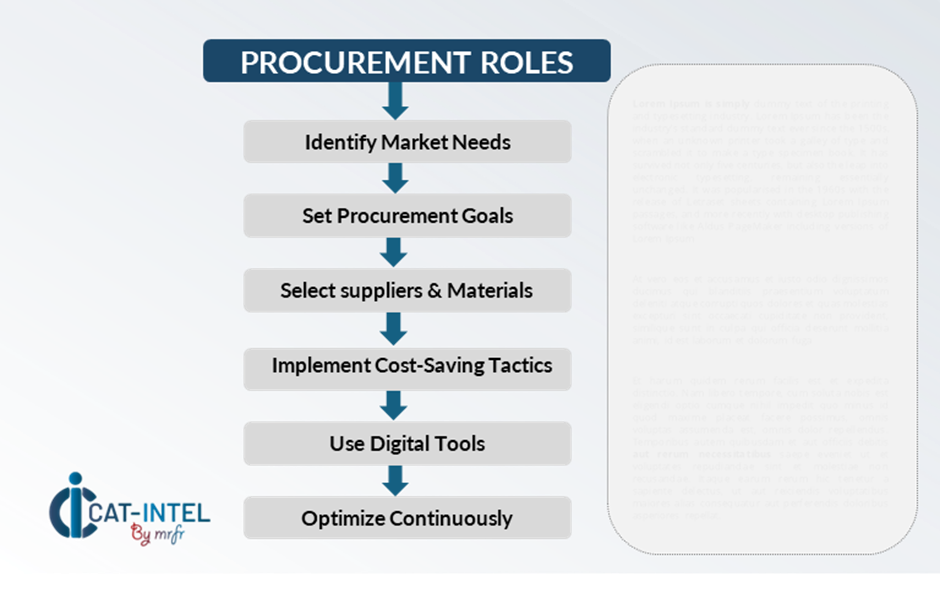
Pricing Outlook for Glycol Ethers: Spend Analysis
The price prognosis for glycol ethers is projected to remain moderately volatile, with probable changes caused by a variety of reasons. Production technology developments, increased demand for eco-friendly and bespoke formulas, and regional pricing discrepancies are all key factors. Furthermore, the rising integration of sustainable practices and stronger environmental rules is exerting upward pressure on prices as firms adapt to meet new compliance requirements.
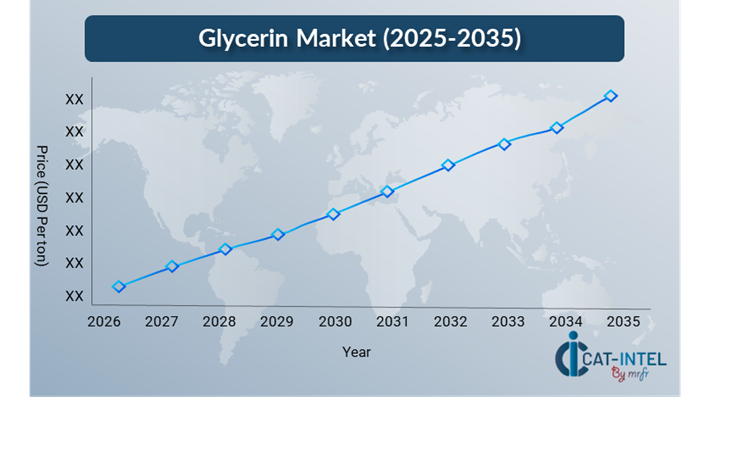
Graph shows general upward trend pricing for Glycerin and growing demand. However, there may be fluctuations influenced by economic conditions, technological advancements, and competitive dynamic.
Efforts to optimize procurement processes, strengthen vendor relationships, and invest in specialized glycol ether solutions are crucial for cost management. Leveraging digital tools for market monitoring, anticipating prices using analytics, and applying efficient contract management procedures can all help to improve cost efficiency.
Building solid, long-term partnerships with reliable suppliers can assist assure pricing consistency and eliminate procurement risks. Securing multi-year agreements with suppliers can provide price stability and attractive conditions, particularly in a volatile industry. Despite the constraints of growing costs, organizations who prioritize scalability, adopt efficient procurement methods, and use technological breakthroughs will remain cost-effective and operationally superior in the glycol ethers market.
Cost Breakdown for Glycol Ethers: Total Cost of Ownership (TCO) and Cost-Saving Opportunities
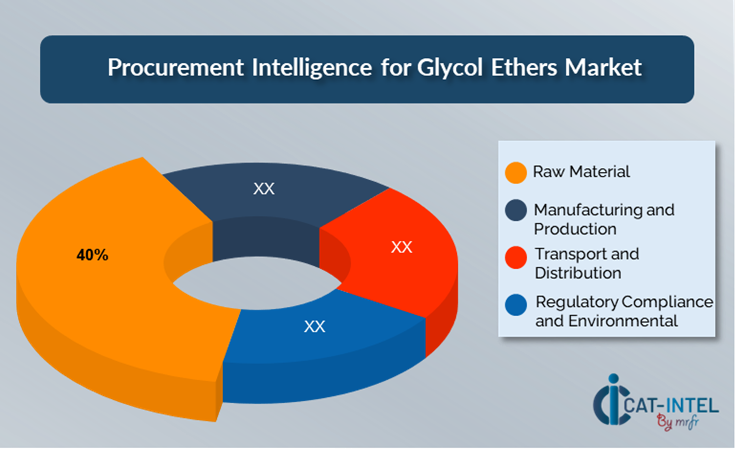
Raw Material: (40%)
Description: Raw material costs make up the majority of glycol ether pricing. These include the expenses of chemicals and other feedstocks used to manufacture glycol ethers, such as ethylene oxide, propylene oxide, and other raw materials.
Trend: In recent years, there has been a greater emphasis on obtaining more reliable and sustainable sourcing strategies, including a shift toward bio-based raw materials to lessen reliance on petrochemical sources.
Manufacturing and Production: (XX%)
Transport and Distribution: (XX%)
Regulatory Compliance and Environmental: (XX%)
Cost-Saving Opportunities: Negotiation Levers and Purchasing Negotiation Strategies
In the glycol ethers business, streamlining procurement processes and using strategic bargaining strategies can result in significant cost savings and increased operational efficiency. Businesses can get better price structures, volume-based discounts, and bundled service packages by entering into long-term relationships with suppliers, particularly those who provide eco-friendly and bespoke glycol ether solutions. Companies purchasing significant volumes of glycol ethers or requiring continuous supply might secure subscription-based agreements or multi-year contracts with suppliers to give more advantageous terms, reduced costs, and safeguard against price hikes over time.
Working with glycol ether producers who prioritize innovation and scalability provides long-term benefits such as access to modern manufacturing technology, greater sustainability practices, and more adaptable solutions adapted to specific industry needs. These enhancements can assist cut operational expenses and increase supply chain efficiency. Companies in the glycol ethers industry can use strategic approaches to better control procurement costs, eliminate risks, and increase operational flexibility while maintaining consistent quality and availability.

Supply and Demand Overview for Glycol Ethers: Demand-Supply Dynamics and Buyer Intelligence for Effective Supplier Relationship Management (SRM)
The glycol ethers market is also steadily expanding, buoyed by increased demand in major industries such as automotive, pharmaceuticals, construction, and electronics. Technological improvements, regulatory requirements, and global economic situations all have an impact on supply-demand dynamics.
Demand Factors:
Sustainability and Regulatory Requirements: Growing environmental concerns and stringent regulations are driving demand for environmentally friendly and compliant glycol ether products. Production
Technological Advancements: As companies embrace sophisticated production technologies such as automation and the Internet of Things, the demand for specific glycol ethers for cleaning, solvents, and coatings grows.
Customization for Industry-Specific Applications: Customized products that fulfil industry-specific regulatory standards and improve manufacturing processes are highly sought after.
Global Manufacturing Capabilities Expansion: As supply chains and manufacturing facilities become more globalized, there is a greater demand for glycol ethers to facilitate products production across many regions. These goods are critical to production efficiency and operational quality.
Supply Factors:
Technological Advancements: Innovations in production technology, such as green chemistry and sophisticated refining procedures, are improving glycol ethers' quality and efficiency.
Vendor Ecosystem: The glycol ethers market is seeing an increase in the number of providers, both major and small, who offer a variety of products with different functionality.
Global Economic Factors: Global oil prices, raw material costs, labour costs, and regional economic conditions all have an impact on glycol ether pricing and availability.
Scalability and Flexibility: Modern glycol ether providers are increasingly providing scalable and flexible solutions, allowing businesses of all sizes and industries to obtain the items they require.
Regional Demand-Supply Outlook: Glycol Ethers
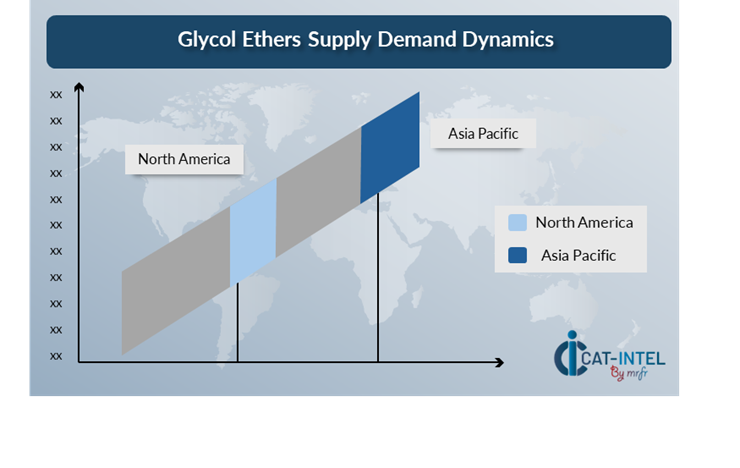
The Image shows growing demand for Glycol Ethers in both Asia Pacific and North America, with potential price increases and increased Competition
Asia Pacific: Dominance in the Glycol Ethers Market
Asia Pacific, particularly China, is a dominant force in the Glycol Ethers market due to several key factors:
Strong Industrial Base and Manufacturing Hub: Asia-Pacific has some of the world's major industrial industries, particularly in automobile, electronics, textiles, and chemicals. The region's extensive industrial base makes it a significant user of glycol ethers.
Raw Material Availability and Low Production Costs: Many Asia-Pacific countries, particularly China and India, have access to low-cost raw materials and established chemical production capabilities. Lower production costs make Asia-Pacific a desirable manufacturing location for glycol ethers.
Rapid Economic Growth and Urbanization: Rapid economic expansion and urbanization in China, India, and Southeast Asia have increased demand for glycol ethers in a variety of industries, including construction, automobiles, and consumer products.
Government Support and Favourable Policies: Governments in Asia-Pacific, particularly in China and India, provide major assistance to their chemical industry through incentives, subsidies, and infrastructure development.
Increasing Emphasis on Sustainable Solutions.: Asia-Pacific countries are putting more emphasis on sustainability, with a growing need for eco-friendly and bio-based glycol ethers. This transition is driven by both governmental pressure and increased consumer knowledge of environmental issues.
Asia Pacific Remains a key hub Glycol Ethers Price Drivers Innovation and Growth
Supplier Landscape: Supplier Negotiations and Strategies
The supplier landscape in the glycol ethers market is both diversified and competitive, with global industry giants and regional competitors affecting critical criteria such as pricing, product customisation, and service quality. Suppliers in the glycol ethers industry have a significant impact on market dynamics, providing a variety of solutions to meet the diverse needs of their customers. Global Industry Leaders: Large, well-established glycol ether manufacturers dominate the market, offering a diverse range of goods. These suppliers specialize on satisfying the broad requirements of a variety of industries, including automotive, pharmaceuticals, and construction.
Smaller, more specialist suppliers focus on delivering glycol ether solutions for certain sectors or applications. These sellers frequently highlight distinguishing attributes such as ecologically friendly products, sustainable manufacturing methods, or chemical properties tailored to niche markets. Customers looking to lower their carbon footprint and comply with regulatory requirements are increasingly drawn to suppliers who prioritize sustainable operations. Technological improvements, personalization, sustainability, and flexible pricing are all important drivers affecting the market, allowing firms to maximize procurement methods.
Key Suppliers in the Glycol Ethers market include:
SABIC
Dow Inc.
BASF SE
Lyondell-Basell Industries
Royal Dutch Shell
Eastman Chemical Company
Huntsman Corporation
Formosa Chemical & Fibre Corporation
SK Global Chemical Company, Ltd
Oxea
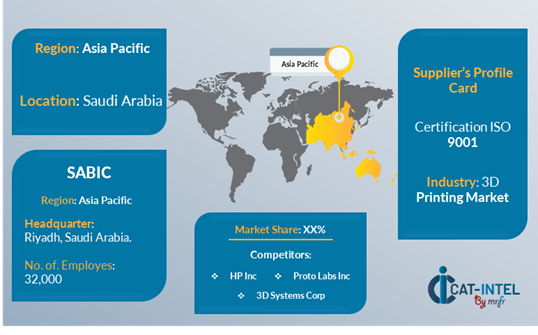
Key Developments Procurement Category Significant Development:
Significant Development |
Description |
Market Growth |
The glycol ethers market is quickly growing, especially in emerging regions where industrialization and urbanization are driving demand. As the manufacturing and construction industries expand, the demand for glycol ethers as solvents, cleaning agents, and industrial fluids rises. |
Cloud Adoption |
The desire for environmentally friendly and non-toxic solutions is becoming increasingly important in defining market trends, driven by both regulatory requirements and customer preferences for sustainable products. |
Product Innovation |
Glycol ether manufacturers are expanding their product lines by incorporating sophisticated formulas and boosting performance characteristics. Market innovations are focused on generating more efficient products for specific uses in industries such as pharmaceuticals and automobiles. |
Technological Advancements |
In the glycol ethers market, improvements in production technology, such as automation and digitalization of manufacturing processes, are increasing the capacities of suppliers. This includes advancements such as IoT integration for production monitoring, machine learning for supply chain efficiency, and robotic process automation (RPA) to improve manufacturing uniformity and quality. |
Global Trade Dynamics |
Changes in global trade regulations, tariffs, and compliance requirements are affecting the glycol ethers industry, especially for multinational corporations that rely on worldwide supply networks. These dynamics are prompting suppliers to modify their manufacturing and distribution strategies to satisfy changing regulatory requirements and improve their global operations. |
Customization Trends |
The glycol ethers market, like other sectors, is experiencing an increase in demand for customized solutions. Many organizations are looking for specialist glycol ether products that are adapted to specific industry requirements, such as highly pure solvents for pharmaceuticals or unique formulas for automotive coatings. |
|
Glycol Ethers Attribute/Metric |
Details |
Market Sizing |
The global Glycol Ethers market is projected to reach USD 9.50 billion by 2035, growing at a CAGR of approximately 3.41% from 2025 to 2035.
|
Glycol Ethers Technology Adoption Rate |
Around 60% of sectors worldwide are increasing their use of sophisticated glycol ether solutions, with a special focus on sustainable and environmentally friendly alternatives. The need for bio-based glycol ethers is increasing, particularly in areas where sustainability is a priority. |
Top Glycol Ethers Industry Strategies for 2025 |
Manufacturers are working to provide more sustainable and environmentally friendly glycol ether goods, particularly bio-based alternatives. Companies are increasingly turning to glycol ether solutions adapted to the specific needs of industries like pharmaceuticals, automobiles, and coatings, where bespoke formulations are crucial. |
Glycol Ethers Process Automation |
Approximately 55% of glycol ether manufacturing processes have automated to reduce waste and enhance consistency. This trend is critical to satisfying the growing demand for high-purity, specialty glycol ether products. |
Glycol Ethers Process Challenges |
The cost of sustainable production processes and complying with environmental standards can increase the overall cost of glycol ethers. While automation and digitalization increase productivity, producers have difficulties in modernizing outdated systems to fulfil the need for high-quality, environmentally friendly glycol ether solutions. |
Key Suppliers |
Leading suppliers of glycol ethers include SABIC, Dow Inc. and BASF SE, providing solutions to various industries, from manufacturing to pharmaceuticals.
|
Key Regions Covered |
Asia Pacific, North America and Europe are major markets for glycol ether adoption, with the automobile, pharmaceutical, and construction industries driving demand. |
Market Drivers and Trends |
With increased environmental requirements, companies are looking for eco-friendly alternatives, such as sustainable glycol ethers derived from bio-based raw materials. Manufacturers are implementing new technologies, such as IoT for supply chain monitoring and AI for enhancing production processes, to ensure higher quality, decreased waste, and better efficiency in glycol ether production. |

